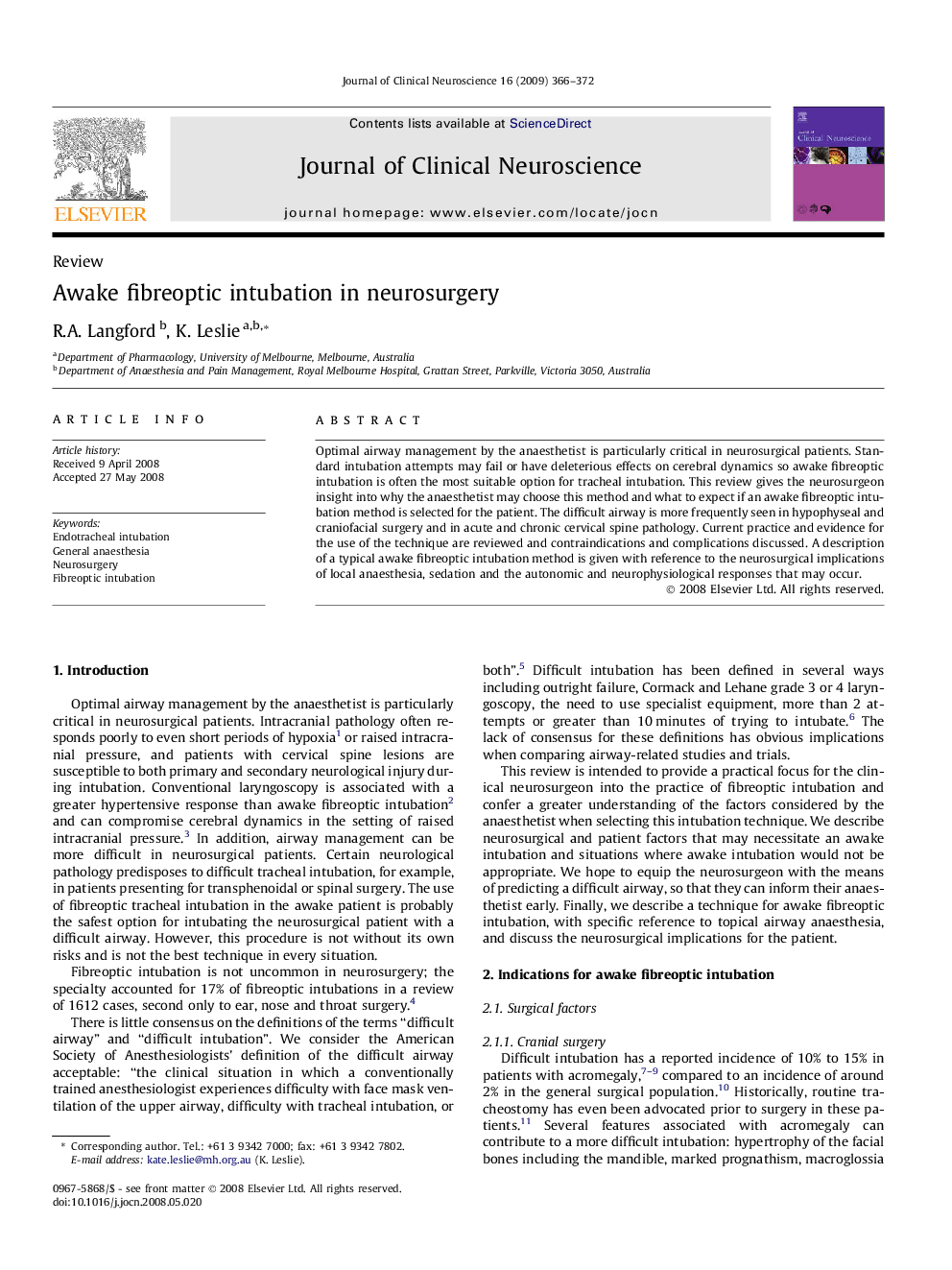| Article ID | Journal | Published Year | Pages | File Type |
|---|---|---|---|---|
| 3062086 | Journal of Clinical Neuroscience | 2009 | 7 Pages |
Optimal airway management by the anaesthetist is particularly critical in neurosurgical patients. Standard intubation attempts may fail or have deleterious effects on cerebral dynamics so awake fibreoptic intubation is often the most suitable option for tracheal intubation. This review gives the neurosurgeon insight into why the anaesthetist may choose this method and what to expect if an awake fibreoptic intubation method is selected for the patient. The difficult airway is more frequently seen in hypophyseal and craniofacial surgery and in acute and chronic cervical spine pathology. Current practice and evidence for the use of the technique are reviewed and contraindications and complications discussed. A description of a typical awake fibreoptic intubation method is given with reference to the neurosurgical implications of local anaesthesia, sedation and the autonomic and neurophysiological responses that may occur.
